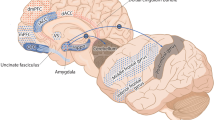Abstract
Rationale
Exaggerated acoustic startle is a prominent symptom of post-traumatic stress disorder (PTSD); however, its physiological basis is not well understood, and there are few available treatments. Neurobiological research has suggested that anti-kindling agents and/or glutamate antagonists can attenuate the acoustic startle response (ASR) in animal models. The anticonvulsant topiramate is an AMPA antagonist that also demonstrates potent anti-kindling effects and may, therefore, have promise in treating trauma-enhanced ASR.
Objective
To evaluate the ability of topiramate to attenuate stress-induced increases in ASR in a previously validated animal model of PTSD.
Methods
Male Sprague-Dawley rats (n=36) served as controls or received single prolonged stress (SPS). SPS consisted of 2 h restraint, forced swim and ether anesthesia, then a 7-day “undisturbed” period. Animals then received vehicle, 10 mg/kg or 30 mg/kg of topiramate orally, twice daily for 7 days. ASR was assessed for all animals before and after the study, in light and dark environments.
Results
SPS produced a sustained increase in the ASR in both environments, an effect that was significantly reduced by topiramate. Meanwhile the ASR of control animals remained unaffected by topiramate.
Conclusions
The current results provide one of the few demonstrations of a single stress episode producing sustained enhancement of ASR. In addition, topiramate demonstrates promise in treating exaggerated acoustic startle symptoms in PTSD or other stress-related disorders.



Similar content being viewed by others
References
Adamec RE, Shallow T, Budgell J (1997) Blockade of CCK(B) but not CCK(A) receptors before and after the stress of predator exposure prevents lasting increases in anxiety-like behavior: implications for anxiety associated with posttraumatic stress disorder. Behav Neurosci 111:435–449
Aston-Jones G, Shipley MT, Ennis M, Williams JT and Pieribone VA (1990) Restricted afferent control of locus coeruleus neurons revealed by anatomical, physiological and pharmacological studies. In: Marsden CA, Heal DJ (eds) The pharmacology of noradrenaline in the central nervous system. Oxford University Press, Oxford, pp 187–247
Berlant J, van Kammen DP (2002) Open-label topiramate as primary or adjunctive therapy in chronic civilian posttraumatic stress disorder: a preliminary report. J Clin Psychiatry 63:15–20
Curtis AL, Pavcovich LA, Valentino RJ (1999) Long-term regulation of locus ceruleus sensitivity to corticotropin-releasing factor by swim stress. J Pharmacol Exp Ther 289:1211–1219
Ebert U, Koch M (1996) Amygdala kindling does not change emotional responding as measured by the acoustic startle response in the rat. Brain Res 733:193–202
Gibbs JW 3rd, Sombati S, DeLorenzo RJ, Coulter DA (2000) Cellular actions of topiramate: blockade of kainate-evoked inward currents in cultured hippocampal neurons. Epilepsia 41:S10–16
Grillon C, Amelie R (1998) Effects of threat of shock, shock electrode placement, and darkness on startle. Int J Psychophysiol 28:223–231
Kato K (2002) The influence of stress on synaptic plasticity. In: XXIII CINP Congress. Collegium Internationale Neuro-Psychopharmacologium, Montreal, PQ, p S. 23.24.
Kim JJ, Foy MR, Thompson RF (1996) Behavioral stress modifies hippocampal plasticity through N-methyl-D-aspartate receptor activation. PNAS 93:4750–4753
Liberzon I, Krstov M, Young EA (1997) Stress-restress: effects on ACTH and fast feedback. Psychoneuroendocrinology 22:443–453
Liberzon I, Lopez JF, Flagel SB, Vazquez DM, Young EA (1999a) Differential regulation of hippocampal glucocorticoid receptors mRNA and fast feedback: relevance to post-traumatic stress disorder. J Neuroendocrinol 11:11–17
Liberzon I, Taylor SF, Amdur R, Jung TD, Chamberlain KR, Minoshima S, Koeppe RA, Fig LM (1999b) Brain activation in PTSD in response to trauma-related stimuli. Biol Psychiatry 45:817–826
Ménard JL, Meaney MJ, Kalynchuk LE (2002) Differential effect of long-term amygdala kindling on acoustic and fear-potentiated startle. In: Abstract Viewer/Itinerary Planner. Society for Neuroscience, Washington D.C.
Mesches MH, Fleshner M, Heman KL, Rose GM, Diamond DM (1999) Exposing rats to a predator blocks primed burst potentiation in the hippocampus in vitro. J Neurosci 19:RC18
Orr SP, Lasko NB, Shalev AY, Pitman RK (1995) Physiologic responses to loud tones in Vietnam veterans with posttraumatic stress disorder. J Abnorm Psychol 104:75–82
Rauch SL, Whalen PJ, Shin LM, McInerney SC, Macklin ML, Lasko NB, Orr SP, Pitman RK (2000) Exaggerated amygdala response to masked facial stimuli in posttraumatic stress disorder: a functional MRI study. Biol Psychiatry 47:769–776
Servatius RJ, Ottenweller JE, Natelson BH (1995) Delayed startle sensitization distinguishes rats exposed to one or three stress sessions: further evidence toward an animal model of PTSD. Biol Psychiatry 38:539–546
Shalev AY, Orr SP, Peri T, Schreiber S, Pitman RK (1992) Physiologic responses to loud tones in Israeli patients with posttraumatic stress disorder. Arch Gen Psychiatry 49:870–875
Shors TJ, Dryver E (1994) Effect of stress and long-term potentiation (LTP) on subsequent LTP and the theta burst response in the dentate gyrus. Brain Res 666:232–238
Shors TJ, Seib TB, Levine S, Thompson RF (1989) Inescapable versus cscapable shock modulates long-term potentiation in the rat hippocampus. Science 244:224–226
Taverna S, Sancini G, Mantegazza M, Franceschetti S, Avanzini G (1999) Inhibition of transient and persistent Na+ current fractions by the new anticonvulsant topiramate. J Pharmacol Exp Ther 288:960–968
Walker DL, Davis M (1997) Double dissociation between the involvement of the bed nucleus of the stria terminalis and the central nucleus of the amygdala in startle increases produced by conditioned versus unconditioned fear. J Neurosci 17:9375–9383
Wauquier A, Zhou S (1996) Topiramate: a potent anticonvulsant in the amygdala-kindled rat. Epilepsy Res 24:73–77
White HS, Brown SD, Woodhead JH, Skeen GA, Wolf HH (2000) Topiramate modulates GABA-evoked currents in murine cortical neurons by a nonbenzodiazepine mechanism. Epilepsia 41:S17–20
Acknowledgements
This research was supported by Johnson and Johnson Research Institute. The authors would also like to acknowledge the technical assistance of Brandon Kote and So Jung Min.
Author information
Authors and Affiliations
Rights and permissions
About this article
Cite this article
Khan, S., Liberzon, I. Topiramate attenuates exaggerated acoustic startle in an animal model of PTSD. Psychopharmacology 172, 225–229 (2004). https://doi.org/10.1007/s00213-003-1634-4
Received:
Accepted:
Published:
Issue Date:
DOI: https://doi.org/10.1007/s00213-003-1634-4




